Pilgrimage to Sinai
Gail Goodman
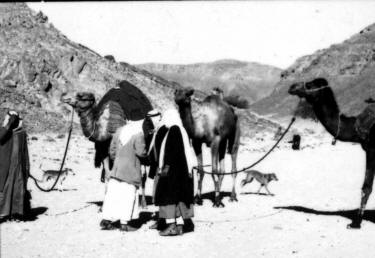
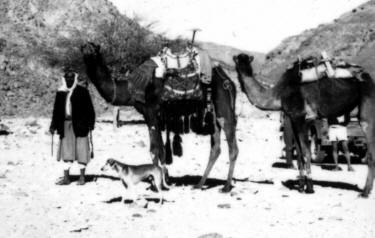
|
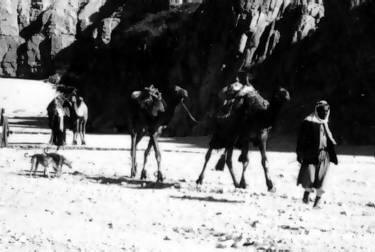

|
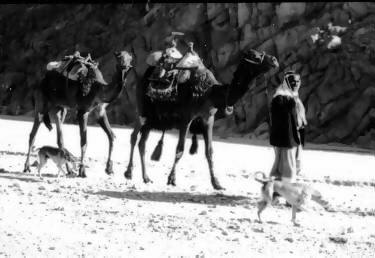
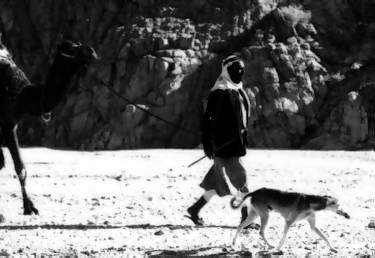
|
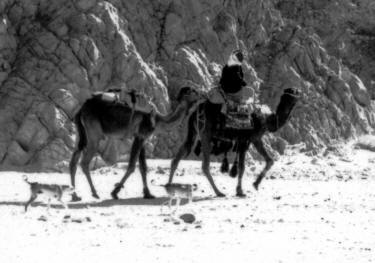

|
|
The above pictures are of a Bedouin Caravan. |
|
Many wonderful adventures probably remain no more than personal memories because the telling of the tale seems so impossible, so overwhelming, especially since most of us are undisciplined journal writers. Such was my trip during July and August of 1999 to Sinai, Israel and South Africa. How can I share with you the incredible visual and emotional memories, the sheer serendipity of every aspect of the trip, the warmth of the people, the delicious food, the awesome landscapes, the fascinating dogs? As impossible as the task seems, the tale must be told because such tales have constantly delighted readers of all genres, have delighted me throughout the years, and, I hope will delight you. This tale is for those who are fascinated with Saluqis, my personal passion, and for those who just like a good dog-inspired story. Good story, serendipity, uncanny fate…..all apply equally. But where to begin…..it is as though the past thirty years had been leading me to my adventure and I just followed along. I guess age does that to one's reflections; things seem to have been part of "a plan" which during the initial experiences had no discernable shape. When I met my first Saluqi in Israel in the early 1970s, who would have predicted that the breed would become the great fascination of my life, or that I would eventually edit a book inspired by Saluqis descending directly from the same hounds that were the ancestors of this first one, or that I would eventually travel into Sinai to thank the Bedouin family for their hounds and their inspiration? Having seen so few Saluqis in their native environments before I left Israel in 1976, I had dreamed of returning to meet Arab, Bedouin, and Israeli breeders and "talk dogs". Though it took almost twenty-three years, I am a fortunate soul who can say, I lived a dream. My trip had two distinct components. The first week was devoted to delivering a copy of The Saluqi: Coursing Hound of the East to the family of Salim Ibn Jahzi, the Bedouin breeder of Ruah Tarabin, the foundation of Igal Sella's Tarabin line, which was the foundation of my Midbar line, and visiting various sites along the coast of the Gulf of Aqaba and the oasis of Ayn al-Furtaga, in the interior of Sinai. The next two weeks were devoted to traveling all over Israel meeting people and seeing hounds. Every day of those three weeks was wonderful. To try to convey some of the experiences, I'll rely on memory and my sporadic journal entries. The photographing and measuring of hounds and the picture survey always occurred in a context which itself was fascinating. So, here goes…..I'll start with the story of "the book". But serendipity was at work even before the book delivery story begins! My son lives in South Africa.
Dog contacts in some countries are harder to make than in others, and I found making good contacts in Israel very difficult. But, finally, during the past few years, I had been in contact with Dr. Zafra Sirik who now heads the sighthound section of the Israel Kennel Club, and Andreea Diaconessa, the enthusiastic secretary of the club. I had also made a good contact through Arabian horses, Tzviah Idan, and she knew not only Israelis but several Arab families who keep both horses and hounds. My original contacts, Dr. Rita Trainen and Igal Sella, were also still living in Israel and we had renewed correspondence. So, finally, after twenty-three years, a Saluqi trip to Israel seemed feasible. And certainly I did not want to be underfoot when the baby was just home from the hospital. Since I'd already be in that part of the world….Israel a mere eight-hour flight from South Africa….plans were in the making well before the Sinai adventure became a possibility.
A little more "background" is necessary so that you can grasp the sheer serendipity. As the manuscript for my edited volume The Saluqi was nearing completion, I felt very sad that though Bedouin and Arab and breeders of many regions and nationalities and their hounds were featured throughout the book, there was no chapter about the particular Bedouin who were actually responsible for the book, the Bedouin of the Sinai Peninsula.
Then, by chance, Sherran Smith Pak gave me a book by Burton
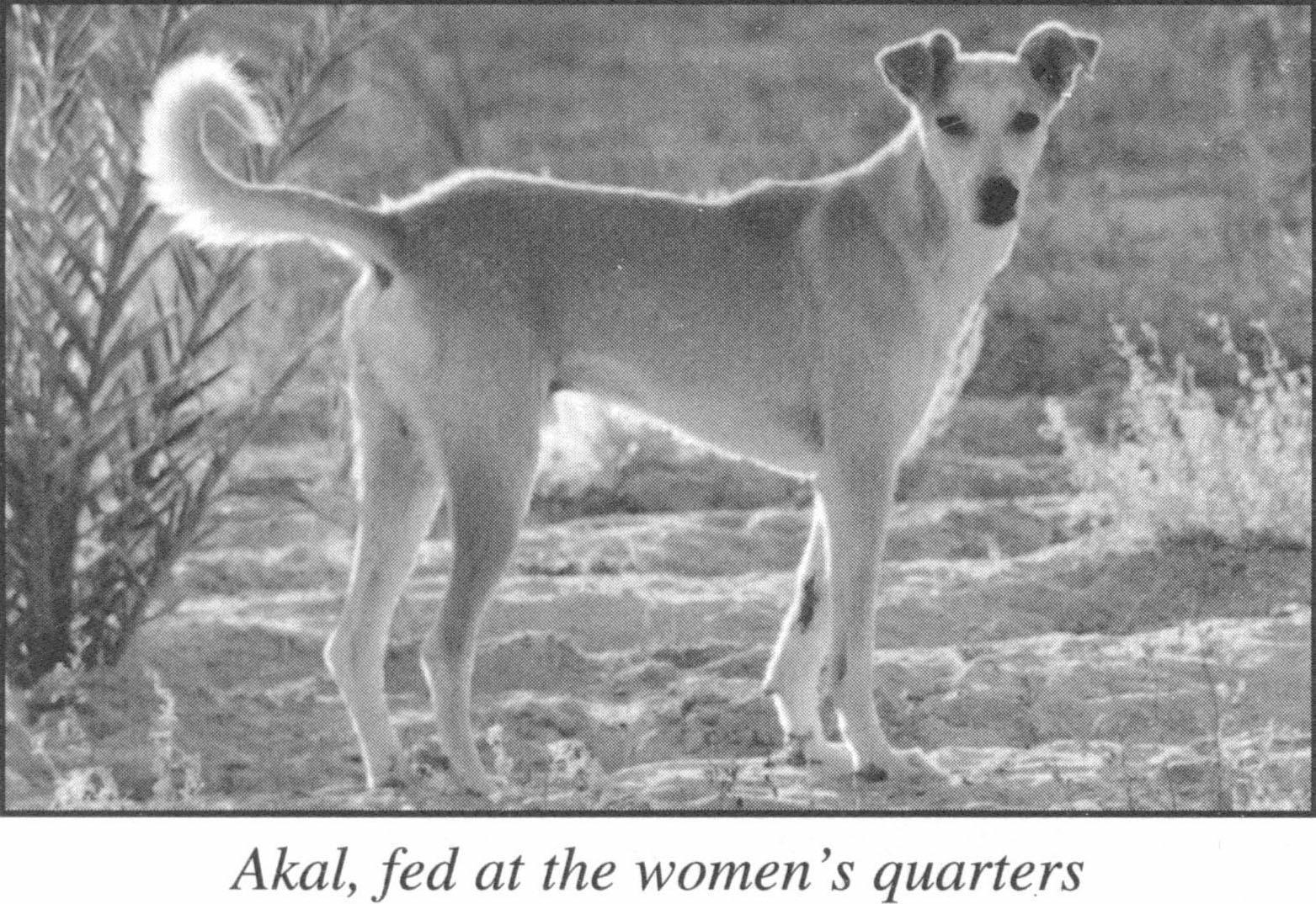
Burton Bernstein called me back but said that all he knew about the Bedouin was in that chapter and the person I needed to contact was his guide, Clinton Bailey. Dr. Bailey knew "everything" about the Bedouin, he was a blood brother, and he was the person for my chapter. "How can I contact him?", I asked. "Here's his phone number", Bernstein replied. So, I called Dr. Bailey in Jerusalem and his wife answered. I explained what I wanted and she replied, "My husband is teaching in the States this semester, here's his phone number". I called his office and got the answering machine and left a message. Later in the week my phone rings, "Hello, this is Clinton Bailey…." 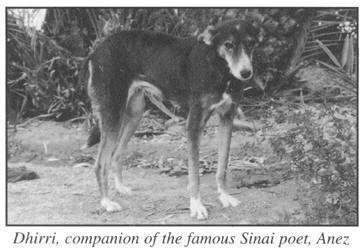
Though Dr. Bailey understood and appreciated the sentiment behind my request, and though he is a great authority on many aspects of Bedouin life, culture, and poetry, he said that he had never specifically looked at Saluqis. After some discussion he agreed that he could explore the subject during an upcoming field trip for his ongoing personal research and data collection. Being a masterful ethnographer and translator, with no preconceptions about the topic, his study resulted in the chapter "Bedouin Saluqi Lore of Sinai and the Negev" which contains fascinating material about the breed and how the Bedouin evaluate and train their Saluqis. It was thrilling to receive the manuscript and his work remains a unique contribution to our knowledge base. Upon receipt of his copy of the book, Dr. Bailey wrote me a nice note expressing his pleasure at being a part of the effort. That was several years ago.
In March I got a call from Dr. Bailey that he would be in my area for a lecture tour and maybe we could meet. Certainly, and we had a pleasant dinner and I asked him if he'd given a copy of the book to the Ibn Jahzi family. He replied that he had not. I then said that I had deeply wanted them to have a copy of the book because had it not been for them there would never have been a book. I mentioned that I was going to be in Israel this summer, and Dr. Bailey said, "Well, I'll take you to Sinai". And so began my Sinai adventure. I had camped for two weeks along the coast in the oasis of Nuweba with my children in the early 1970s and remembered it as profoundly beautiful but I had never been to the interior of Sinai. I could barely contain my excitement over the prospect of not only visiting Israel again, after 23 years, but of actually delivering my book to the family of Salim Ibn Jahzi, breeder of Ruah Tarabin, source of my Saluqi experience. As time passed, however, I received and read several papers on the status of the Bedouin in Israel, particularly in the region of the Negev desert, and besides the very difficult issues involved in attempting to settle formerly nomadic people, the very low status of women in Bedouin culture became blatantly clear. I began to doubt whether my personal desire to deliver my book to the Ibn Jahzi family would be understood; I began to doubt whether my impulse of gratitude would be recognized "cross culturally". After all, I am a mere woman and though the book is about Saluqis, Saluqis are dogs and the status of dogs is generally low, too. Considering there is a Bedouin saying "even a chicken has more brains than a woman", my growing concern seemed well founded to me, anyway. So, I began to query people with various experiences and perspectives of life in the Middle East and Bedouin culture in general. My dear friend, Mrs. Danah Al Khalifa, who has lived among the Arabs for most of her life, was deeply concerned that I would be disappointed, sensing my excitement at meeting "real Bedouin", so she sent me a copy of Lady Anne Blunt's 1881 A Pilgrimage to Nejd, informing me that I must read it on the plane because very little has changed. An Israeli man, Shalom Stokelman, informed me that it was ridiculous to give a book to the Bedouin, what do Bedouin need with a book? They only want to be free, unencumbered, and will wrap the book in plastic and bury it, maybe returning in a year or two to see if it is still there. Dr. Bailey answered my doubt ridden e-mails with silence; I guess he felt that I should understand if he had agreed to take me, the gesture had merit. I did receive reassurance from several people…..people who knew Arabs well, two of them being Arab women and one an American man, CDR George Zimmerman, who had grown up in Saudi Arabia. They all felt that some gestures are universal and expressions of gratitude fall into that category. My Arab woman friend, Sheikha Lulua Al Sabah, felt absolutely certain that not only would my feeling be understood, but that it would be appreciated in the spirit intended. I told her that I had planned on giving the family the leather cover book but that it was suggested I give the regular cover instead. She replied that in Arab culture a gift should be "one's best" and that if the leather book was "the best", then I had to give that one. So, I felt firm in my decision. But, the final encouragement came from a Lebanese woman, a Ph.D. and activist for women's rights in the Middle East, Mirna Lattouf. Dr. Lattouf said that first I should go simply for the experience, and that she wished she could join me. And, secondly, she felt as a Western woman, bringing the Bedouin a book about Saluqis, that I would be well received, but that beyond my reception, I would be doing something for their daughters by my example. "So, go, do it for their daughters…." were her words of encouragement. I needed nothing more. At about 10:30 a.m. on July 25th my trip to Sinai began. This was a "working trip" for Dr. Bailey, so there was no attempt to seek out Saluqis along the way. After a lifetime of working among the Bedouin of the Negev and Sinai, Dr. Bailey is known everywhere in the region and as we drove towards the border between Israel and Egypt there were numerous stops to check in on a family, to check up on the status of projects, to give people lifts from one point to another along the route, even to attend a funeral. Incredibly, I was submerged into the "real" world of the Bedouin. I saw that "modern" summer tents are made of stitched sheets of heavy plastic, that camps are dry places sitting in parched areas, and that Bedouin life in the Negev is spare, very spare. And, as we moved southwards, the little vegetation that there was in the Negev vanished…..the land became barren. 
By the time we reached the border the sun had set but the heat had not subsided. First we went through the Israeli passport control and check points, then onto the Egyptian passport control, customs, and check points. The Israeli officer discovered, due to my married name, that I had an Israeli identity card number and I thought, this is it, my trip ends here, or, at best I'd have to pay some astronomical "tax" to exit Israel because I had not brought the document with me. I held my breath while Dr. Bailey looked on in stony silence. The Israeli clerk asked me if I knew that I had the number and as naively as possible I replied that after so many years, I had forgotten. Matter of factly my passport was stamped and I was permitted to exit Israel. Getting into Egypt, however, was, if not exactly a nightmare, a surreal experience. I've lived in the Phoenix, Arizona area for the past eighteen years, where the temperatures are comparable to the Sahara desert, for those interested in "climate trivia", so, I'm used to intense heat. But, after a full day of immersion in a totally new world, all the excitement of just making the trip, the anxiety rush at the Israeli border, not only was I beginning to feel like I was having an out of body experience, but the heat was overwhelming. The Egyptian experience began at customs. Not only did we have to take every piece of luggage out of the car and open it, but the glove compartment was searched and I even had to open the book to prove that it had pages rather than contraband inside! Mind you, both Clinton Bailey and I have gray hair and at least a few wrinkles. What on earth did the customs people expect two almost senior citizens to be transporting into Sinai? 
Once through the customs check, or maybe it was before, it's all such a melted blur, the paperwork for Egyptian auto tags and insurance began. Again, it was surreal….anybody who believes that every corner of the world is hooked up to computers has never tried to cross the border into Sinai from Israel. Try moving through a large hall with only a few fans blowing along a long line of autonomously functioning clerks, none of whom seem to communicate with each other, each processing multiple copies of single forms, written in pencil with neatly placed scraps of carbon paper between the copies. If a scrap of paper is left behind while moving from one clerk to the next, one has to start all over again. Then, multiple fees need payment so one moves back and forth between the clerks and the payment window for what feels like hours. The motivating force here must be that if the Israelis can stick it to the Arabs, the Arabs can stick it to the Israelis just as well. 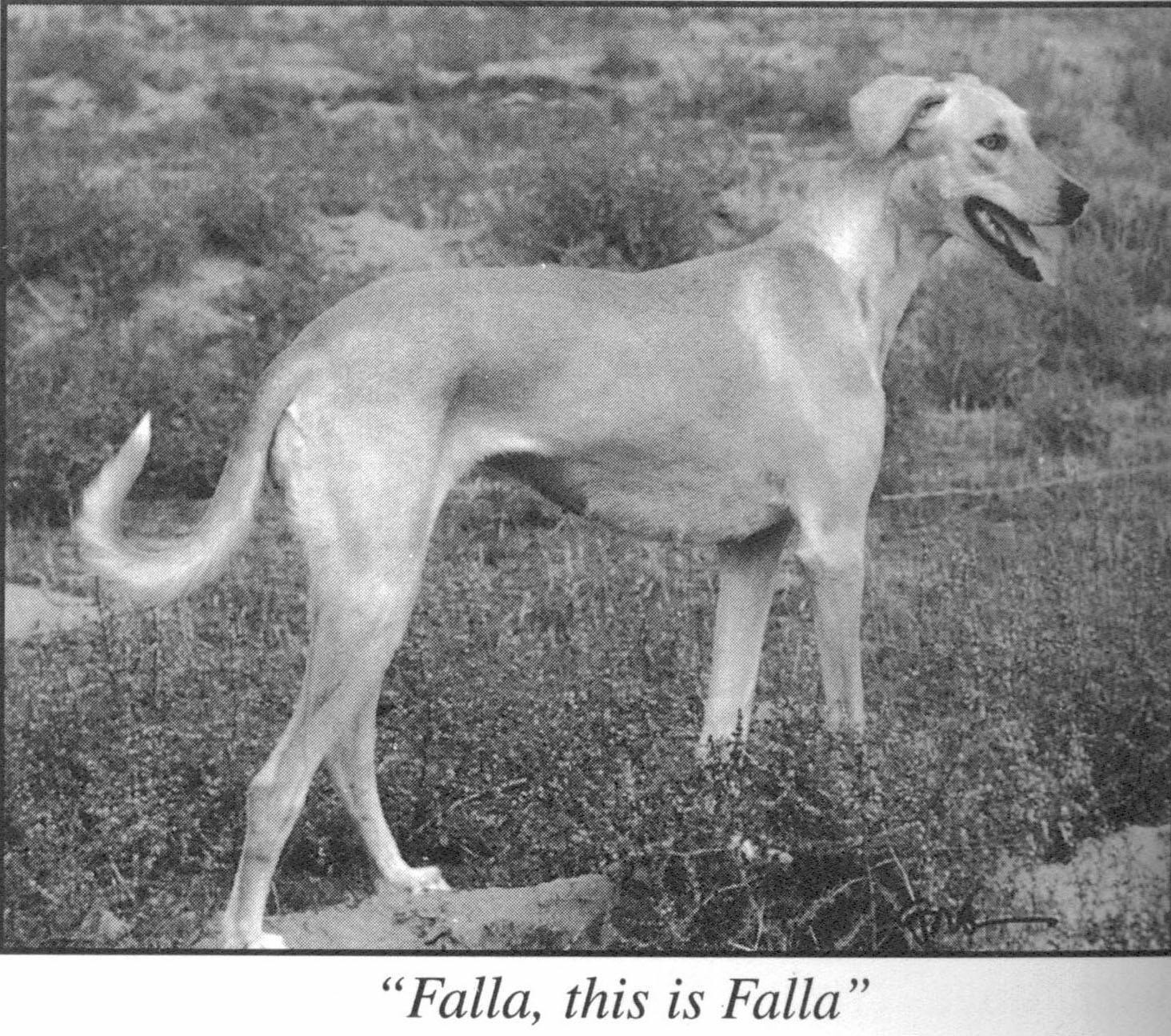
Obviously, crossing the border was gruesome. Once past the offices and buildings and barracks, there are numerous barricaded checkpoints, all manned by young soldiers with huge guns and grim expressions. I just began praying that no one would suddenly be overcome and start shooting in the name of some political or religious fanaticism. The heat and humidity were relentless. At the final checkpoint, a grinning fellow informed us that we must pay some amount as a tax, or something, and another amount to him as a gift! Leaning against the car, smiling, surrounded by armed soldiers, he extended his hand into which was placed the requested sum, and the car was waved forward, through this final barrier into the Sinai Peninsula. 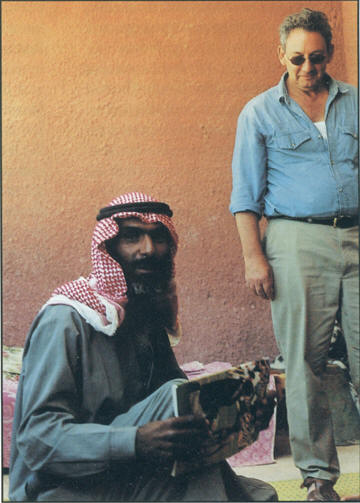
This piece will close with excerpts from my journal and my memory of presenting the book. Most of the days in Sinai were spent visiting the informants of Dr. Bailey, so I had the enormous privilege of participating in Bedouin life as the friend of a respected guest. The experience was fascinating. We visited numerous different settings and I saw a wide range of family situations. Everywhere, and all environments were sparse, we were offered generous amounts of sweet tea, coffee, fruit, and any luxury the people could produce….in addition to their personal warmth and humor. Their material poverty was contrasted with a boundless generosity of spirit. In the interior of Sinai, in the oasis of Ayn al-Furtaga, in the camp of Anez, I was "sent" to the women's quarters. Since I was a guest and this was the Bedouin culture, and I didn't speak Arabic and was exhausted, I simply accepted this (otherwise offensive) arrangement, and got yet a deeper glimpse into the lives of Bedouin women. Had I stayed longer in this environment, I'm sure in no time I would have been wearing a veil! 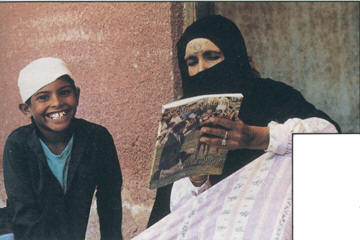
To see Saluqis in Sinai, one must search for them, particularly. There were "dogs" (referred to as 'akal by the Bedouin) and possibly some Saluqi crosses (referred to as dhirri ) in the town of Nuweba, but I saw no Saluqis. Several breeders' names were mentioned as still having Saluqis, even a particular old hound named Saruk (which means rocket), was recalled and the comment was made that ten years ago Sinai was full of camels and Saluqis, but, today, cars are a problem. As we pulled out of the camp of "the blind judge", a long-legged white Saluqi came out from behind some boulders where it had been sleeping in the shade during our visit, and ambled towards the main dwelling, but it was visible for a mere instant before the jeep rounded a bend and the camp was gone. In the oasis camp of Anez there were all three types of dogs that were identified for Bailey (in The Saluqi, pages 247-255) by his Bedouin informants: 'akal, dhirri, salag . Moments after our arrival, the salag disappeared and I did not see her again. The 'akal stayed up at the women's house, where he was fed, and the dhirri was obviously the aged companion of the aged Bedouin, Anez, famous in his youth as a daring smuggler and clever poet. As we descended from the mountains of Sinai to the coast, I saw another long-legged white Saluqi and a few dogs with Bedouin, momentarily, as we headed back towards Nuweba. 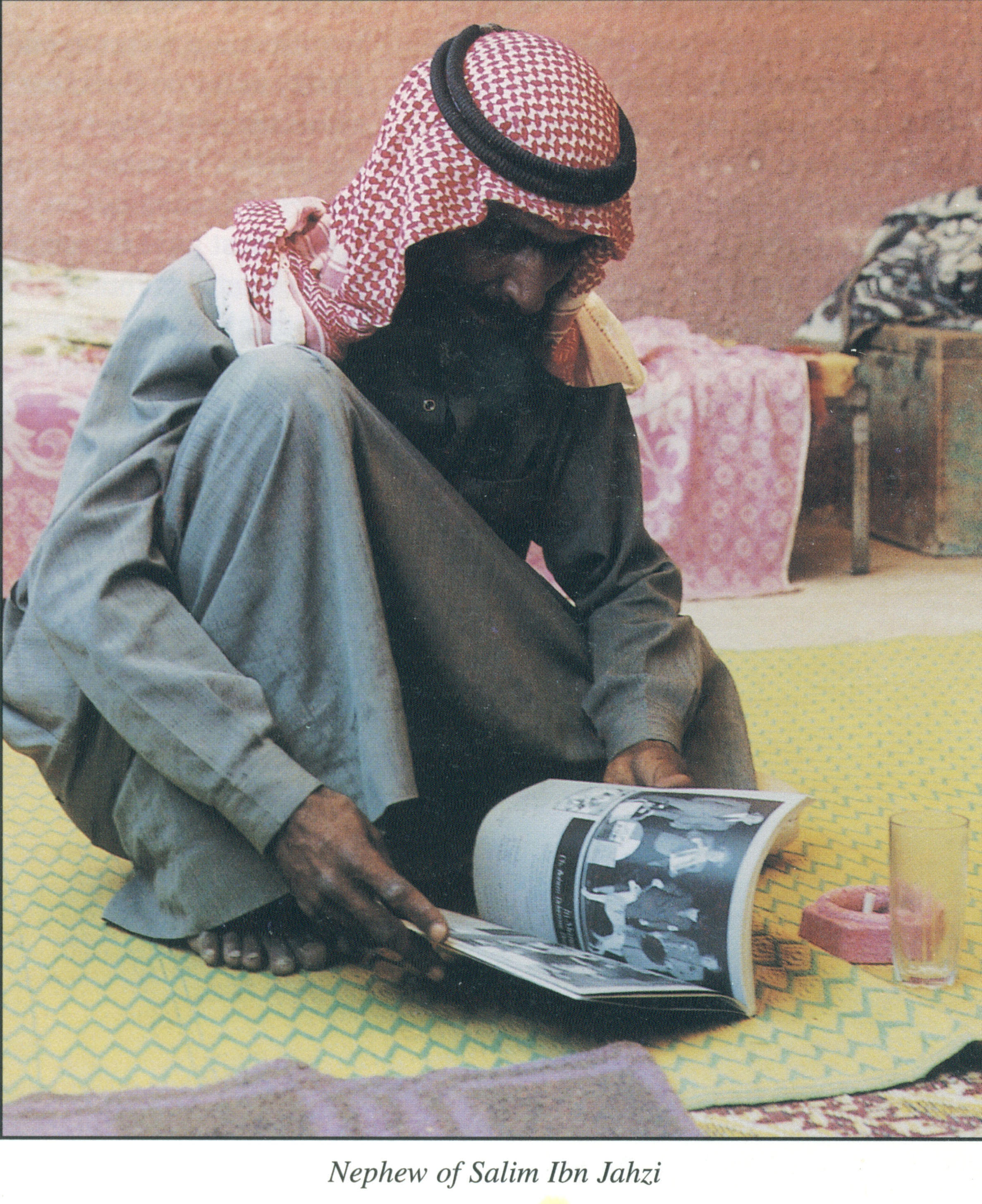
I was able to do my Saluqi-picture-survey in three contexts in Sinai with several Bedouin and the results are fascinating; they will be reported in a subsequent article. Sinai is one of the world's awesome places.
July 26, 1999
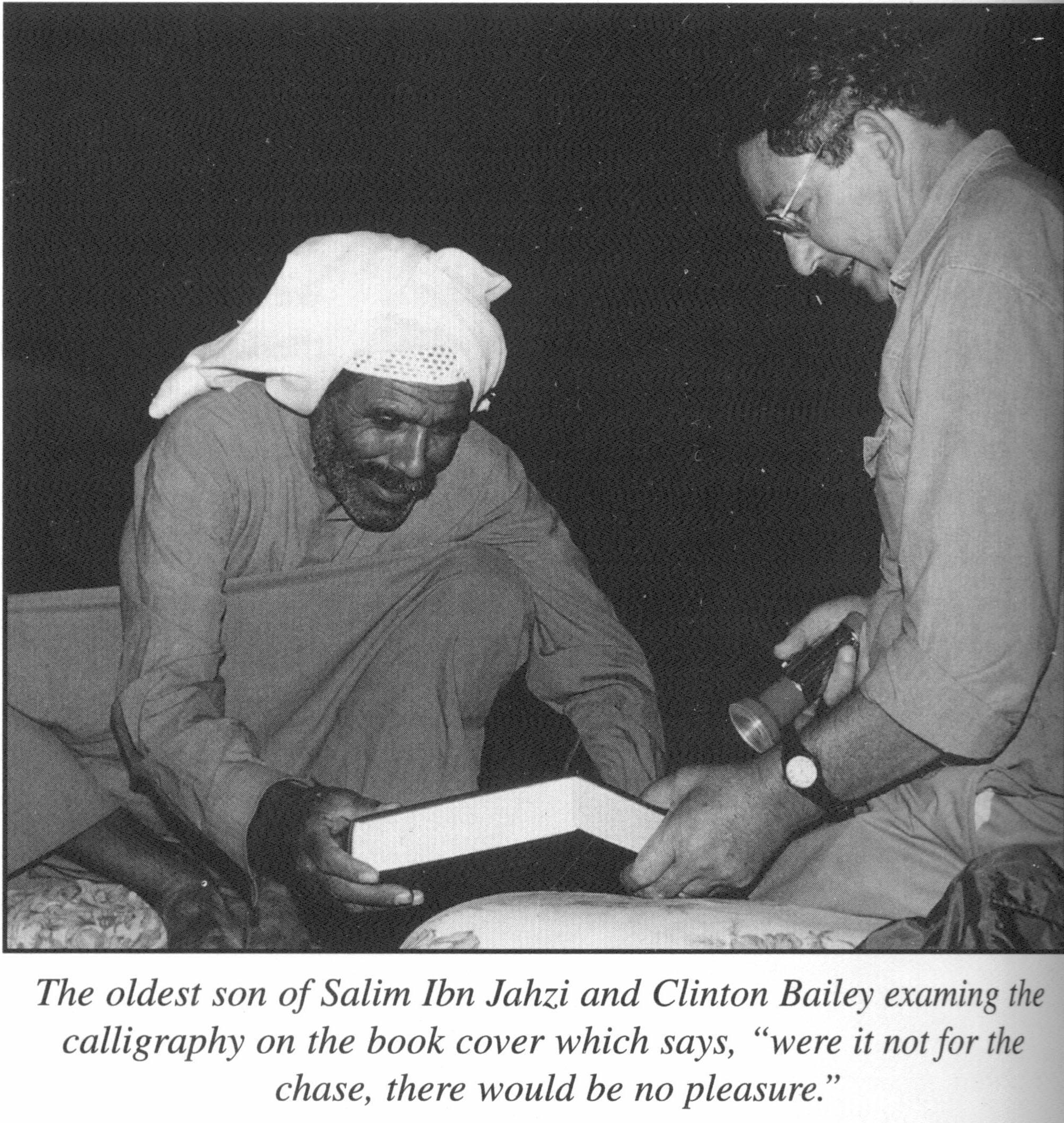
Left to my own thoughts, though I felt I should be writing everything down, I didn't feel like writing anything…..I just felt like sitting and soaking in the incredible beauty of the Aqaba coast. The hotel was in the same area we had camped all those years ago…..it was still a magical place. And there I was, and in a short while I would be meeting the family of Salim Ibn Jahzi, who had passed away a few years ago, but whose wife and relatives lived in Nuweba Tarabin. I would be delivering my book. All I could do was sit there, silently, as Dr. Bailey worked on his notes, and drink my coffee, and pinch myself……was this real? Breakfast finished, we got in the car and headed towards a "town" of adobe dwellings just a short ways from the beachfront and promenade of tourist stalls and restaurants. We passed an old fort, I have forgotten who built it…..the Turks, the English….Sinai was all emotion, my intellect simply did not function there. We pulled up to a walled house with a wooden gate and got out of the car. Children were at the gate and they all knew Dr. Bailey and chattered with him as he led the way into a large, cool, clean, by Western standards empty house, and out onto a large patio where a beautiful, tattooed Bedouin woman was seated and a tall, robed Bedouin man stood and greeted us. There were long cushions on the floor lining the walls with pillow-like cushions to lean on. I was motioned to sit down, which I tried to do as gracefully as possible, keeping my legs covered and not revealing how extremely out of shape I was. The patio filled with clearly warm and friendly conversation, though I couldn't actually understand the words. The Ibn Jahzi family looked at me, and I looked at them, and, I must say, at least to me, it felt a lot like "family". Through their Saluqis I had known of them for so many years….. 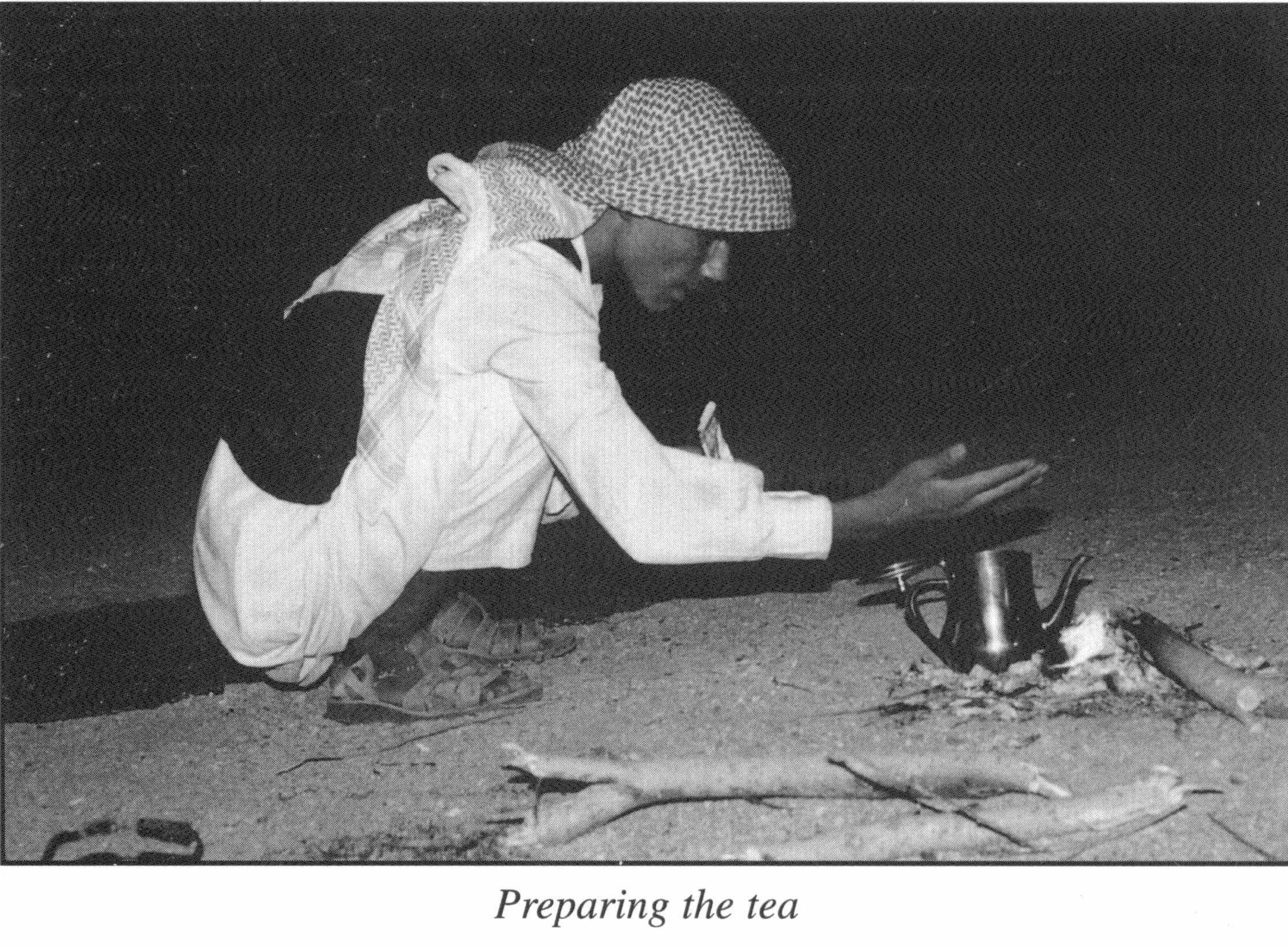
I can't remember whether it was coffee or that delicious sweet tea with mint that was brought by a young, dynamic woman family member who spoke a little English. Cold grapes were set before me and I was directed to help myself. All I could think of was the directive from the Center for Disease Control, if you can't peel it or cook it don't eat it, as the best way to avoid travelers' diarrhea. My first day with the Bedouin and I'm given grapes and I know, as a guest, I must eat them. So, I sat there and tried to peel the tiny, sweet grapes, one after another as the children watched me and Dr. Bailey talked animatedly with the older woman, who was Salim Ibn Jahzi's wife, and the man who was the nephew, and the young woman, who had had some formal education and was, possibly as a result, still unmarried. The conversation obviously turned to me and I was asked to show the family the book, which I took out of the bag I had carried it in. I was then directed to open the book to the page where Salim Ibn Jahzi was pictured while Dr. Bailey talked about the book and why I had come to their home, I suppose. They all looked at me rather intently as I showed them the photo, then I handed the book to the nephew who handed it to the tattooed woman. She looked at the photograph of her husband with Igal Sella, then she began to leaf through the pages of my section on the Tarabin and Midbar Saluqis. Everyone actually recognized the location of the tree the two men were leaning against, but as she continued to study the photos, she came to the picture of Div Tarabin and exclaimed "Falla, this is Falla". It seems Salim had a Saluqi named Falla (which means joy or happiness) and Div Tarabin looked exactly like this hound. Everyone agreed this was correct….my Div Tarabin was the image of Salim's Falla! I couldn't have been more thrilled. Not only had the family recognized their relative, but they recognized their Saluqis! At this point I took out my photo albums and the nephew looked with great interest at all of the Midbar Saluqis descending directly from the Tarabins, and then everyone looked at the copy of Sighthound Review that I'd brought. They seemed both interested and amused that so much attention was given to dogs. They were astonished by the amount of hair on the Afghan hound on the cover. As I talked, brimming with enthusiasm, about the book and the accomplishments of the Saluqis descending from their hounds, the young woman commented to Dr. Bailey, "She's mabsut". Mabsut is an Arabic word that covers the feeling of happiness, enjoying oneself, contentment all in one. And, yes, I was. As the conversation around me continued, I requested permission to take pictures, which was given, and I asked Dr. Bailey whether it would be all right to try my Saluqi survey on the nephew of Ibn Jahzi, whose name I did not learn. Dr. Bailey translated most of the little I said, either in response to questions that he could not answer for me or questions I wanted to ask, into Arabic, so, for the most part, I did not address people directly myself. I was more than a little nervous as I got the survey cards out, opened my notebook, and handed this real Bedouin Saluqi authority the first sheet and asked my question, "Which is a Saluqi?", followed by the question, "Why is it a Saluqi?" The man studied the page with the three photographs intently for a long time and then commented, with expertise, on each of the hounds pictured. The comments were translated for me, but as each sheet was presented, I was better able to understand the distinctions being made myself. We looked at several sheets of photos and each sheet produced more information on how this particular Bedouin man viewed the dogs. It was so exciting…..I was finally collecting my own data in the "heartland" of the breed! While I continued my survey, apparently dinner plans were made. Dr. Bailey informed the family that the book was for them but it seems protocol demanded that it be presented to Ibn Jahzi's oldest son, who had not yet arrived. We would return in the evening. I gathered up my survey cards, my camera, and the book and tried not to groan too loudly as I stood up. Good-byes were said and it was suggested that I arrange for the nephew to receive a copy of the book because he was clearly deeply interested and had been a valuable source of information; I agreed. We left to meet with one of Dr. Bailey's informants in a community further down the coast. I was on a cloud! We found the compound of the man and were ushered in to his majlis, a block room with grated openings at ground level so that the sea breeze could blow through. We were motioned to sit down on the clean, sandy floor. The man's tall, elegant daughter knew some English and seemed delighted to have guests. Tea was brought almost immediately and the majlis was full of people and chatter. As Bailey organized his notes and tape recorder and began his work, I leaned back against a wooden chest, my legs tucked under my long skirt, and floated in and out of focus, at one point even holding the three month old, nursing baby of the sensually beautiful second wife who appeared to be about the same age as the man's daughter. Baby Hassan was not wearing a diaper and eventually I felt a warm little trickle through my skirt. When his mother took him from me to nurse, which was done openly (according to Bailey the Bedouin do not consider a woman's breast erotic), she noticed that he had wet and touched my skirt and laughed and asked why I hadn't said anything. She directed the daughter to take me into the courtyard to rinse my skirt, which was done with mirth. I resumed my seat and as I began to doze off, the young wife noticed and asked her husband could she bring me a pillow; he indicated yes, and a clean, pink pillow cased pillow was brought to place behind my head. Hours of intense discussion transpired but, eventually, it was time to leave, signaled by Dr. Bailey going to the car for the gifts he brought to each family. As we got into the car, the charming daughter told Dr. Bailey that the next time he visits he must bring her a book of Shakespeare, a pack of Bazooka bubble gum, and chocolates, which amused him enormously. 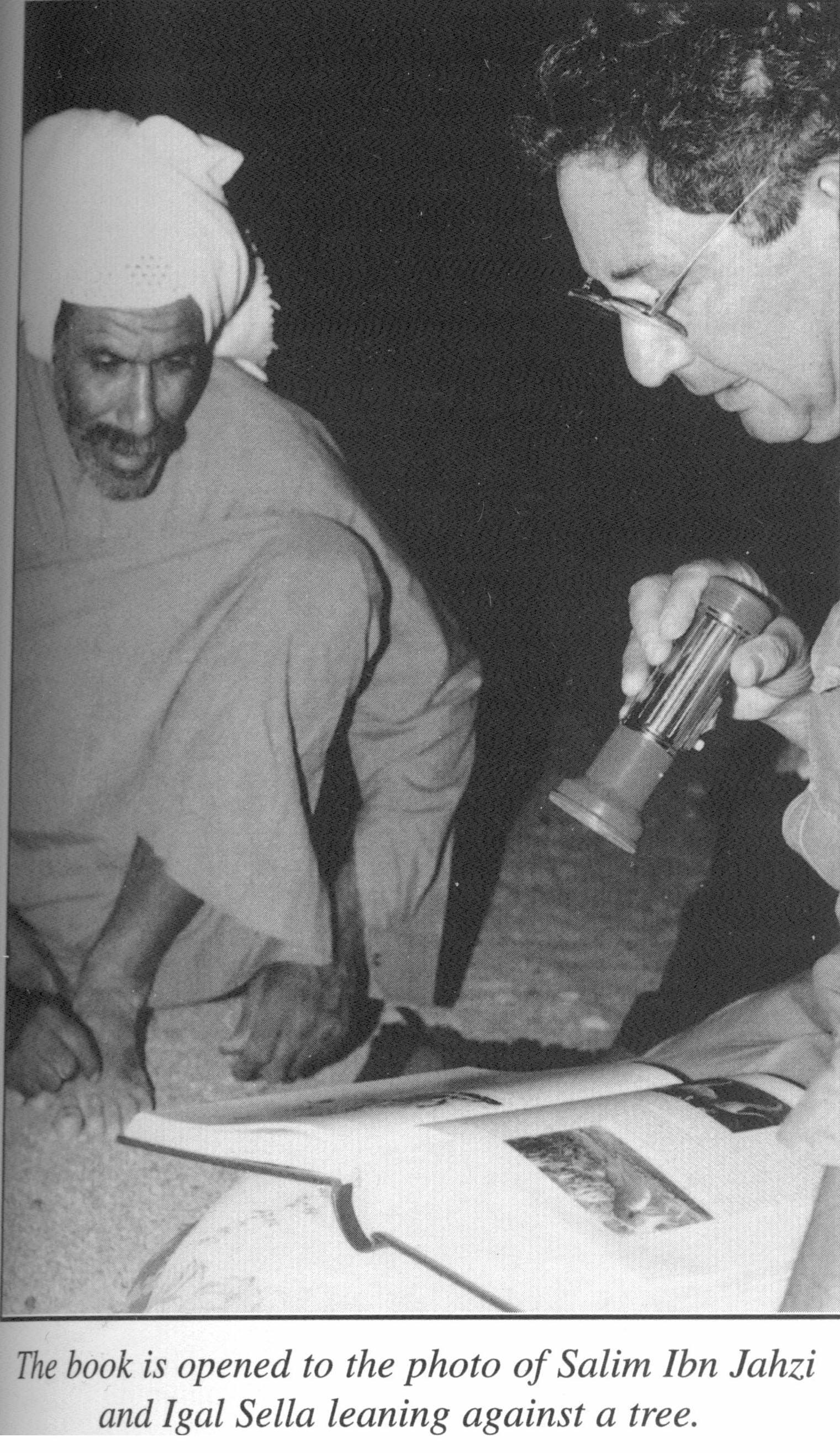
Through the dusk we returned to Nuweba Tarabin, to the home of the Ibn Jahzi family, to formally present the book. We entered through a different gate than we had in the morning. We walked into a large, open, clean, sandy courtyard, passing a shadowy figure sitting silently on a rug, smoking in the twilight. She remained motionless as we walked past her towards the coffee fire at the far side where Salim's nephew was sitting with another younger man who was tending the fire. Cushions with pillows were set around the fire; the two Bedouin were on one side, Dr. Bailey and I on the other. We drank sweet tea and I lay my head down on the pillow; I couldn't sit upright any longer. The men talked. I must have dozed off, at least for a few moments, but my eyes opened periodically, stimulated by the gnawing in my stomach as delicious smells of food wafted across the courtyard….I was not only exhausted, I was starving! Possibly I was hallucinating by this point, but I thought I saw two robed figures come into the courtyard then vanish. Then, as the final daylight was fading, another gate opened and the oldest son of Salim Ibn Jahzi, the son "who lives mostly in Egypt", entered the courtyard. My eyes opened wide and I was suddenly fully awake. This was the man to whom I was to present the book. The man said his greetings to everyone, then knelt down, on the same side of the fire as his relatives, facing Dr. Bailey. Bailey began to talk to the man, then turned to me and told me to get the book out and open it to the picture of Salim Ibn Jahzi. He also asked me to repeat what I had told him I wanted to say to the family, which was, essentially, that so many Arabs and other people throughout the world had this book, which never would have come to be if it had not been for his father and his father's Saluqis, that I wanted to thank his family, above all, and to give them the book. Bailey asked me to list again for him who, specifically, had the book, and I told him that book number one went to the late Emir of Bahrain, and all of the royal families of the Gulf region had the book, and many of the members of the royal family in Saudi Arabia had the book, and the daughter of King Hussein had the book, and, his family, too, must have this book. Above all, I wanted them to have my book and that is why I have come to Sinai. Whether Dr. Bailey added more to my sentiment, I don't know, but the book was then handed to Ibn Jahzi's son, who had sat silently listening to all that Dr. Bailey had said. A long silence followed, then the man began to speak to Dr. Bailey. There was such emotion in his voice as he spoke, which for a Bedouin, whose culture teaches stoicism, is highly unusual, that without even being told anything of his words, I knew he had been touched by my gesture….. my appreciation, my homage had been received into this man's heart. Serendipity had yet again facilitated this event by making one of the finest translators and foremost authorities on Bedouin language and poetry, Clinton Bailey, the person to deliver my thanks. It is no wonder that the recipient of the words was moved. When the oldest son of Salim Ibn Jahzi finished his speech, he placed the book and the photo album into the bag I had brought them in, stood up, made a gesture of parting, and left. Dr. Bailey told me only that he had said he was deeply honored that so many important people in the world would see his father's picture and know who his father was. The moon had risen and palm fronds were stripped to put on the fire, which flared lighting up the Bedouin figures close to it…..an ancient, timeless moment I'd seen in so many pictures…..and here I was, taking my own picture and watching a perfectly round moon move through eucalyptus branches on its way around the Sinai sky as a tray heaped with boiled fish and cumin rice is set before us, and I am told to eat as the men put their right hands into the dish, picking choice pieces of fish and making balls of the rice. I had read about this so many times and here I was, in front of a Bedouin feast dish, piled high, ravenously hungry, trying to make a ball out of sticky rice so that I could get something into my mouth…..me, in the flesh! Well, my rice doesn't make a ball….it sticks to my palm and the more I try to roll it, the more it sticks! I end up peeling it off my hand with my front teeth, much of it falling in my lap, and thinking out loud, wait until I tell Danah I'm actually doing this, since she had often laughed telling me about how much food she drops all over herself at Bedouin feasts! She said she was always so glad it was dark by the time the food was served so nobody could see what a mess she made. Here I was, starving, rice all over my hand and the rest of me, having a marvelous time. The Bedouin men asked what I had said, and Dr. Bailey replied, yet again for this perfect day, she's mabsut. Spoons had been provided for the inept, so I quickly abandoned the art of perfect rice balls and ate a huge amount of the chewy fish and delicious rice, and simply prayed that my stomach would hold up. The rice had been boiled in the fish broth but there was no fishy taste to either. When it was clear that everyone had eaten as much as they could, our host commented to Dr. Bailey that he had hardly eaten, to which Dr. Bailey responded by pointing to the large empty space on the dish in front of him. This seemed to satisfy our host and he motioned to the younger man to bring a pitcher of water and a towel…..and clean warm water was poured over our hands and they were patted dry with the towel. This lovely gesture ended our dinner. We took our leave. 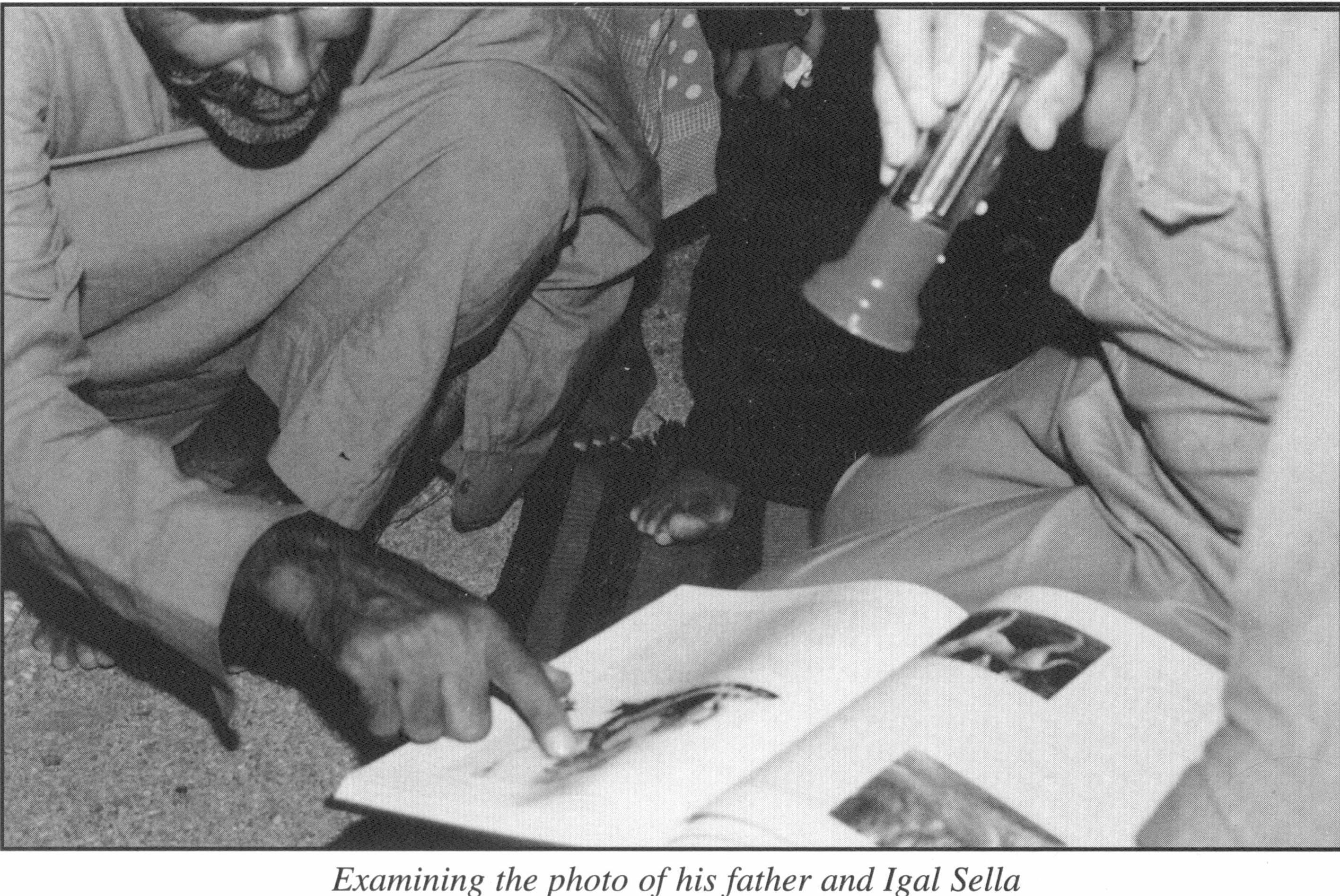
Our sleeping quarters for this night were bamboo bungalows with palm roofs in a Bedouin owned beachfront area near the town. The bungalows were spacious with cement floors and large, screenless windows. For a few moments I worried about bugs, I'm a real sissy, but, I was so exhausted, as I put my head down on the pillow I immediately began to slide into a deep sleep. I had lived a perfect day. As the hot wind from Sinai blew through the windows, over my body, towards the Gulf, the sound was like blood flowing through a heart…..swoosh, swoosh…..pumped by the ancient heart muscle of the universe.
|
 Two years ago he got married and I had a wonderful trip to South Africa for the wedding, then to a game reserve where we actually saw a lion kill, then to a wild dog and cheetah breeding farm, and a trip to Kwa Zulu Natal to see the indigenous dogs. Obviously…. a fantastic trip. Well, as luck would have it, my first grandchild was due in August and, of course, I would have to see the baby. Another trip was in the making.
Two years ago he got married and I had a wonderful trip to South Africa for the wedding, then to a game reserve where we actually saw a lion kill, then to a wild dog and cheetah breeding farm, and a trip to Kwa Zulu Natal to see the indigenous dogs. Obviously…. a fantastic trip. Well, as luck would have it, my first grandchild was due in August and, of course, I would have to see the baby. Another trip was in the making.
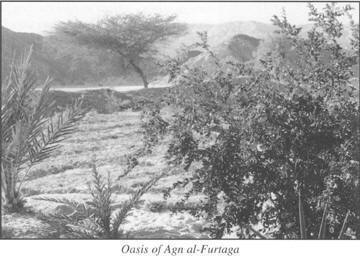 In the late 1960s Igal Sella had received an elderly bitch, Ruah Tarabin from Salim Ibn Jahzi of Ayn al-Furtaga and from the mating of Ruah to the Bedouin bred Lobo eventually came my imports and my own direct desert descent litter from Div Tarabin and Azal. Had I not had the experience of these phenomenally athletic, intense, companionable Saluqis, the book never would have come to be. These Saluqis changed my whole understanding of the breed and, due to their incredible athleticism, demanded that I take them into open field coursing competition, which never would have become an obsession otherwise. The Bedouin hounds and their offspring were my inspiration, yet the Sinai Bedouin remained unrepresented in the book that was, in essence, a tribute to them. Though this saddened me, I just hadn't been able to find anyone who could write about them.
In the late 1960s Igal Sella had received an elderly bitch, Ruah Tarabin from Salim Ibn Jahzi of Ayn al-Furtaga and from the mating of Ruah to the Bedouin bred Lobo eventually came my imports and my own direct desert descent litter from Div Tarabin and Azal. Had I not had the experience of these phenomenally athletic, intense, companionable Saluqis, the book never would have come to be. These Saluqis changed my whole understanding of the breed and, due to their incredible athleticism, demanded that I take them into open field coursing competition, which never would have become an obsession otherwise. The Bedouin hounds and their offspring were my inspiration, yet the Sinai Bedouin remained unrepresented in the book that was, in essence, a tribute to them. Though this saddened me, I just hadn't been able to find anyone who could write about them.
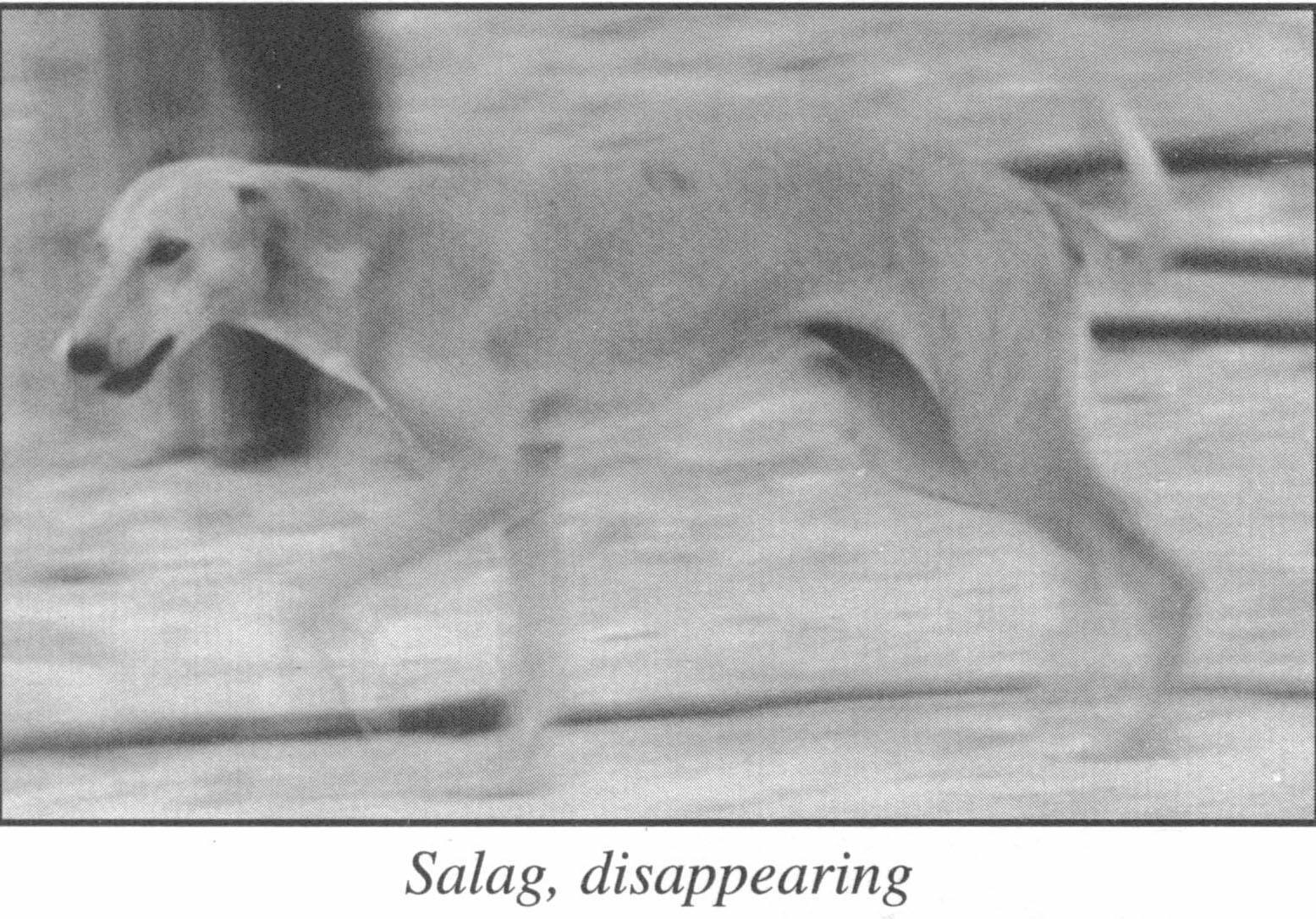 Bernstein,
Sinai: the Great and Terrible Wilderness, and I read it. To my absolute astonishment, there was a chapter about Ayn al-Furtaga and a visit with Salim Ibn Jahzi and his Saluqis! Bernstein's guide through Sinai was a Dr. Clinton Bailey who was well respected by the Bedouin of the Negev and Sinai. The chapter, to my delight, included the story of how Salim's "noisy pack" came to be, as well as fascinating material on Bedouin beliefs and culture in general. I thought ah ha! I have found someone to write about the Tarabin Bedouin! All I have to do is find Burton Bernstein. So, I wrote to the publisher requesting his address; they sent me his agent's. I wrote to his agent asking them to contact him; no answer. Despair was setting in when, as I was leafing through the book, I noticed that the Preface was written in a small town in Connecticut. The guy must have a phone…..what the hell…..I called information and asked for his number. Of all the luck, it was listed! I called, his wife answered, and I explained what I wanted, that I was desperate to have the Sinai Bedouin represented in my book, and her husband seemed just the person to do it. She said she'd tell him and he'd get back to me.
Bernstein,
Sinai: the Great and Terrible Wilderness, and I read it. To my absolute astonishment, there was a chapter about Ayn al-Furtaga and a visit with Salim Ibn Jahzi and his Saluqis! Bernstein's guide through Sinai was a Dr. Clinton Bailey who was well respected by the Bedouin of the Negev and Sinai. The chapter, to my delight, included the story of how Salim's "noisy pack" came to be, as well as fascinating material on Bedouin beliefs and culture in general. I thought ah ha! I have found someone to write about the Tarabin Bedouin! All I have to do is find Burton Bernstein. So, I wrote to the publisher requesting his address; they sent me his agent's. I wrote to his agent asking them to contact him; no answer. Despair was setting in when, as I was leafing through the book, I noticed that the Preface was written in a small town in Connecticut. The guy must have a phone…..what the hell…..I called information and asked for his number. Of all the luck, it was listed! I called, his wife answered, and I explained what I wanted, that I was desperate to have the Sinai Bedouin represented in my book, and her husband seemed just the person to do it. She said she'd tell him and he'd get back to me.